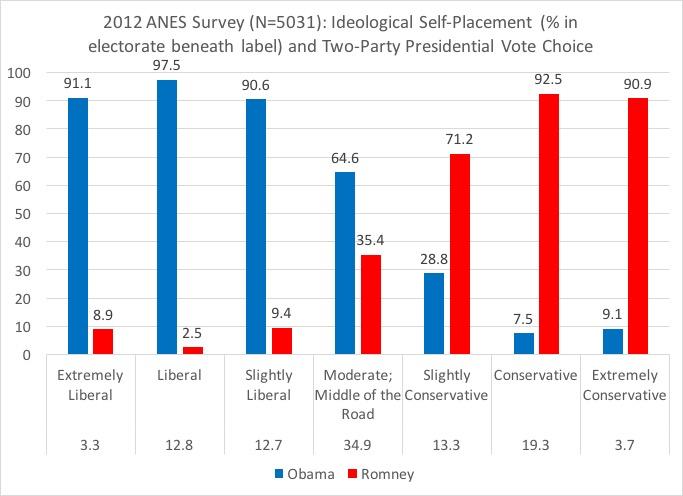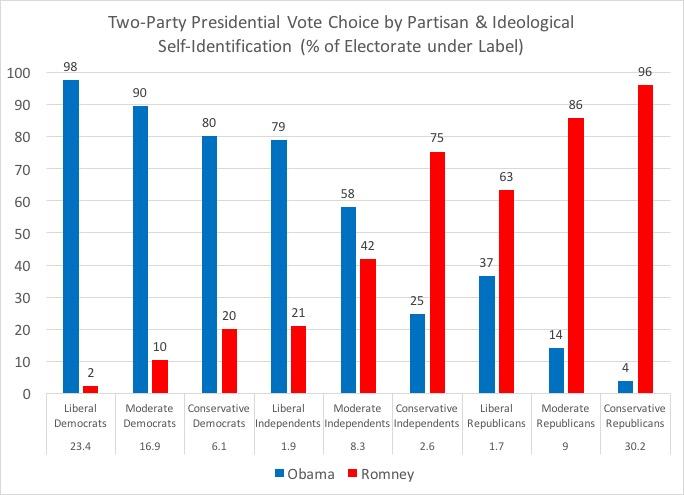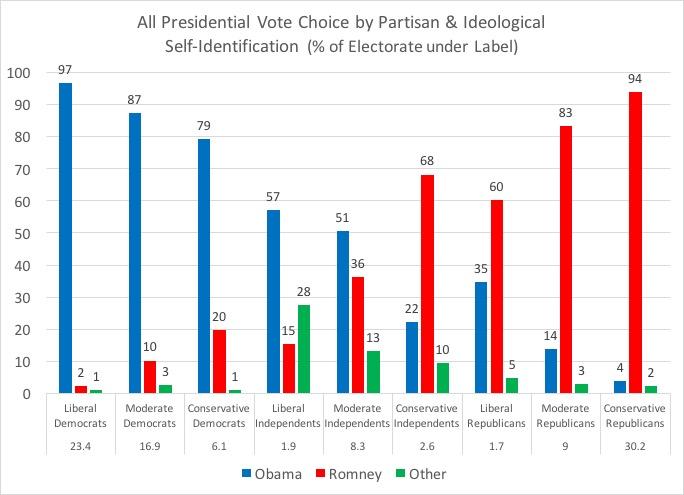Don't believe media hype of 'Independent' voters
Published January 30, 2016
by Michael Bitzser, professor of Political Science, Catawba College, wfae.org, January 28, 2016.
In the past few weeks, two news stories implied this year’s election could be determined by not only "independent" voters but a possible ‘independent’ presidential candidate.
The media hyped a Gallup Pollthat indicates more than 40 percent of Americans identify as politically independent. Gallup also found that conservatives and moderates were neck and neck in the ideological contest in American politics.
Most recently, talk about former New York City mayor Michael Bloomberg has resurrected a traditional discussion on independent runs for the White House, which typically never materialize.
With this year’s Democratic and Republican presidential primaries, and the intensity of polarization, it doesn’t take much imagination to inflate the “independents are the makers in American politics” bubble. Nevertheless, there’s enough reality to burst that bubble, especially when it comes to the glorified notion that the ‘moderate middle will save American politics.’
First, the discussion of the great bulk of Americans being politically independent, while at first glance true, is really masked by latent partisanship. Gallup asks, “In politics, as of today, do you consider yourself a Republican, a Democrat, an an independent?” Then, the 40-plus percent who identify as independent are asked a follow-up question, “As of today, do you lean more to the Democratic Party or the Republican Party?” Based on that follow-up, the mass of 44 percent deflates to 11 percent of the total respondents.
So, nearly 90 percent of Americans identify with one party over the other. That fact is buried in some stories about this poll.
When we move on to American political ideology, we can consider a spectrum between extreme liberalism through the moderate/middle of the road to extreme conservativism. While the ideological extreme “wings” seem to dominate the discussion in American politics, their numbers are significantly small for the voices they appear to command.
In the 2012 presidential election, of the 5,038 respondents to the American National Election Study (ANES) survey, a plurality (35 percent) identified themselves as “moderate” or “middle of the road,” with a typical bell curve distribution to either extreme of the ideological spectrum. Those who consider themselves the ‘extremes’ in ideological terms account for less than 10 percent of the total electorate in 2012.
In looking at how these moderates voted in the 2012 presidential election, they were the closest group to being divided, but still rather lopsided toward President Obama than Mitt Romney.
All of the other ideological respondents were much stronger in their support of the associated party and the presidential candidate, with only ‘slightly conservative’ respondents being at 71 percent support for Romney. All others were ninety percent or greater in their partisan support.
This ideological adherence fits with the partisan adherence when it comes to presidential vote choice: again, you will see 90 percent loyalty from the ‘strong partisans’ to those independents who lean to one party or the other in presidential vote choice.
If the ideological identification was combined with partisan identification, one could get a more concise sense of how the various components of the 2012 general electorate voted. In general, the collective party & ideological affiliation gives us a comprehensive view of voting loyalty: liberal Democrats and conservative Republicans gave more than 95 percent of their vote choice to their respective candidates.
But only among those near-extinct liberal Republicans did you see a competitive vote choice; still, nearly two-thirds of liberal Republicans supported Romney. Only among moderate independents, what one could label as the ‘pure’ middle of American politics, was the vote choice closest—and even then, a 58-42 split isn’t within the realm of a 55-45 percent ‘competitive’ designation.
But what if a third party runs a viable campaign this year?
In 2012, there were other candidates on the ballot, none of which ran a true national and viable campaign (sorry Libertarians). The ANES survey did give the option of indicating “other” in the presidential vote choice, and the results give a sense of where the greatest defections from the party loyalty may come from.
Liberal Independents (all 1.9 percent of the electorate) indicated a willingness to break from either party and vote for some other candidate: 28 percent of liberal independents voted for a candidate other than a Democrat or Republican.
But because of the smallness of that electorate, it would take all independents (amounting to nearly 13 percent of the electorate), combined with some splintering of the shrinking conservative Democratic and minuscule liberal Republican identifiers to even reach 20 percent of the potential national electorate.
It would make for an interesting scenario if we elected a president based on a national electorate, but presidential elections are won and lost within the various states. It would take some significant movements in the fewer and fewer battleground states by an independent candidate to disrupt the typical pattern of the states.
Now, if Michael Bloomberg decides to pump a billion dollars of his own into an election where Sanders and Trump are the standard bearers for the two parties, he might persuade more moderate ‘partisan loyalists’ to his candidacy, most likely coming from moderate Republicans and Democrats. Those strong partisan ideologues (liberal Democrats and conservative Republicans) will likely stay with their parties.
But it is far too soon to even speculate on what rules may be broken this year for the general election, especially after witnessing what has happened in both parties’ primaries so far.
The likelihood, however, is that party loyalty will most likely remain this year. The one potential roadblock is the level of frustration that may be evident within both political parties. We’ll have to wait for November to see how that is manifests itself.
http://wfae.org/post/dont-believe-media-hype-independent-voters
January 31, 2016 at 11:14 am
Richard L Bunce says:
All Bloomberg has to do is win enough electoral votes to keep the R and D candidate from getting to 270 and then the election of the President is thrown into the US House to pick among the top 3 in the EC. The Representatives have one vote per State and I believe the Rs have a clear advantage in States in which they are delegate majorities.Perhaps the House should get an "independent" candidate to run to beat Bloomberg into the race if it looks like Trump is going to be the R nominee... although a long way to go before that is true.
February 1, 2016 at 9:26 am
Norm Kelly says:
Written by a moderate, middle-of-the-roader? Written by a conservative or Republican? Written by a liberal or Democrat college employee? Can we tell? Maybe.
'the shrinking conservative Democratic and minuscule liberal Republican' Liberal Republicans are described as 'minuscule', and 'near-extinct liberal Republicans'. How are demons described? A 'shrinking conservative' group. Not near extinct. Not minuscule. But 'shrinking'. Really? Is there truth to this? Or, more accurately, is the author a liberal and as blind to his state or the state of his party as most media types? What part of Billary, Bernie, or the current occupier can be considered even close to or resembling 'conservative' of Demons? Bernie is a self-proclaimed Democratic Socialist! Did you libs get that? He specifically states he IS a socialist. That's not 'conservative'! Then there's Billary. Remember she formed a behind-the-scenes illegal committee when her slime-ball husband was president to create a full socialized medicine scheme. What part of her schemes even comes close to 'conservative Democrat'? Then we get to the current occupier. Actually implemented step 1 of socialized medicine. His NLRB attempted to stop a PRIVATE business from expanding, hiring more people, and generating economic activity in ANOTHER STATE! What part of 'conservative Democrat' would attempt to prevent people being hired, business expanding, more taxes being paid? Then there's his dependence on 'executive action' to accomplish what is supposed to happen in Congress. The US Constitution does NOT say that if a president feels that Congress is acting too slowly, the president gets to step in, play dictator, and implement his chosen policies anyway. Think about the EPA implementing 'rules' that will force certain electric generating plants to close. At the same time our demand for electricity is increasing, the 'conservative Democrat' occupier is making it more difficult to generate electricity AND more expensive for us to use electricity. (when the next Republican is elected president, will these same 'conservative demons' applaud when executive action is used to get around congress? or will these 'conservative demons' threaten impeachment? will liberal college professors come out in support of Republican executive action?)
So, exactly how does the author get away with describing 'conservative Democrats' as 'shrinking' but 'liberal Republicans' as 'minuscule'? Obviously its because of the authors liberal bias. Looking through liberal glasses skews one's vision dramatically!
Then there's the issue of an increasing number of 'independents'. Frustration with both parties? Ability to vote in primaries even though not affiliated with any particular party? Opening primaries to 'unaffiliated' voters shouldn't happen. In order to vote for a party-designated candidate, one should be registered with that party. Open primaries skew results, but make lib pols feel good. And we all know for libs, feelings are of utmost importance. The only thing that comes in a close second for lib pols is skin color. If lib pols can cater to feelings and higher melanin levels, they are ecstatic! Still not 'conservative'.










